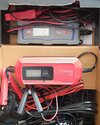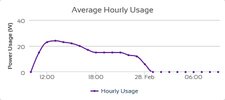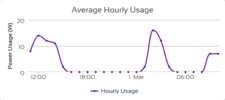D
Deleted member 142255
Because the system is booting up.
ps the 0.3A occurs only after I first put the multimeter probes on the battery negative post and cable clamp, so it's when the car first gets battery power.


 once the battery is fully charged, the battery charger will drop to zero,
once the battery is fully charged, the battery charger will drop to zero,  the old Lidi to the top, (3.8 amp) was rather good for this, but it would only return to a 0.8 amp charge, the new one bottom, will return to a higher rate of charge, and also starts off at a higher rate, and is what I am using now.
the old Lidi to the top, (3.8 amp) was rather good for this, but it would only return to a 0.8 amp charge, the new one bottom, will return to a higher rate of charge, and also starts off at a higher rate, and is what I am using now. was second time put on charge, it takes so long, we often simply don't give them enough time to recharge.
was second time put on charge, it takes so long, we often simply don't give them enough time to recharge.I will get something much thicker to put around the kill switch and the contacts, maybe the toe end of an old shoe, and duct tape it around, so it can't possibly make contact with the car body.

Yes, from the manual.....If an MOT inspector sees that, then it will be an immediate fail, for exactly the same reason a inadequately fixed battery is a fail. The risk is of it shorting and setting fire to the vehcle, with the slightest of accidents.
| Defect | Category |
|---|---|
| (a) Electrical wiring: (i) insecure or inadequately secured (ii) insecure and in contact with sharp edges or connectors likely to become disconnected (iii) likely to touch hot or rotating parts, drag on the ground or the connectors for braking or steering disconnected | Minor Major Dangerous |
| (b) Electrical wiring: (i) slightly deteriorated (ii) so damaged or deteriorated it is likely to cause a short-circuit (iii) for braking or steering components extremely deteriorated | Minor Major Dangerous |
| (c) Electrical wiring insulation: (i) damaged or deteriorated (ii) heavily deteriorated (iii) in such a condition there is an imminent risk of fire or formation of sparks | Minor Major Dangerous |

 as it if caused by the car turning something on/off, or the battery is hard to say, but with an abandoned battery, I had to put another battery in parallel to get the smart charger to turn on, it was nearly two weeks before it started to charge. It was as if someone had flicked a switch, I was thinking it was a lost cause, when it displayed nearly the same charge curve as if only just been discharged.
as it if caused by the car turning something on/off, or the battery is hard to say, but with an abandoned battery, I had to put another battery in parallel to get the smart charger to turn on, it was nearly two weeks before it started to charge. It was as if someone had flicked a switch, I was thinking it was a lost cause, when it displayed nearly the same charge curve as if only just been discharged.


